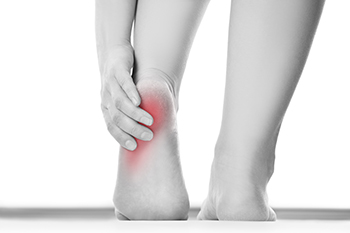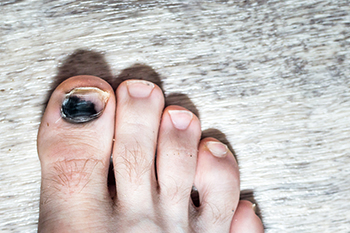
An inflamed nerve found between the third and fourth toes is indicative of Morton’s neuroma. It is a benign condition, despite it causing severe pain and discomfort. This condition is often caused by wearing shoes that do not have enough room for the toes to move freely in. Women who frequently wear high heels may be afflicted with Morton’s neuroma and medical attention is often sought for pain relief. The pain comes from an irritated nerve that gradually becomes compressed, which can affect the entire foot. There may be existing medical conditions that lead to the development of Morton's neuroma. These can consist of bunions, hammertoes, or arch abnormalities. Additionally, participating in running and jumping sporting activities may put pressure on the ball of the foot, resulting in this type of neuroma. If you have pain in this area of your foot, please schedule an appointment with a podiatrist who can effectively diagnose and treat Morton’s neuroma.
Morton’s neuroma is a very uncomfortable condition to live with. If you think you have Morton’s neuroma, contact Frank Henry, DPM of Marble Falls, TX. Our doctor will attend to all of your foot care needs and answer any of your related questions.
Morton’s Neuroma
Morton's neuroma is a painful foot condition that commonly affects the areas between the second and third or third and fourth toe, although other areas of the foot are also susceptible. Morton’s neuroma is caused by an inflamed nerve in the foot that is being squeezed and aggravated by surrounding bones.
What Increases the Chances of Having Morton’s Neuroma?
- Ill-fitting high heels or shoes that add pressure to the toe or foot
- Jogging, running or any sport that involves constant impact to the foot
- Flat feet, bunions, and any other foot deformities
Morton’s neuroma is a very treatable condition. Orthotics and shoe inserts can often be used to alleviate the pain on the forefront of the feet. In more severe cases, corticosteroids can also be prescribed. In order to figure out the best treatment for your neuroma, it’s recommended to seek the care of a podiatrist who can diagnose your condition and provide different treatment options.
If you have any questions, please feel free to contact our office located in Marble Falls, TX . We offer the newest diagnostic and treatment technologies for all your foot care needs.










